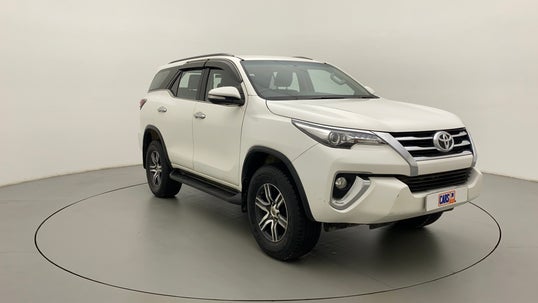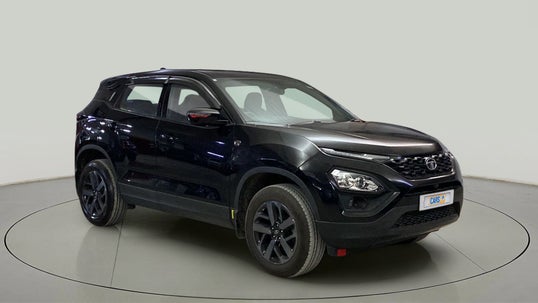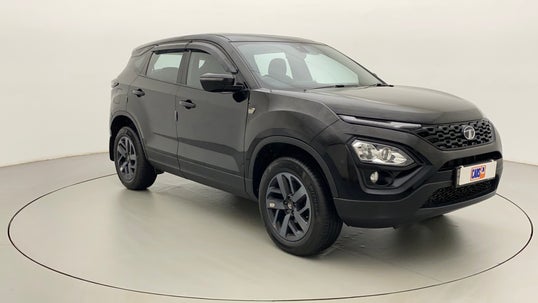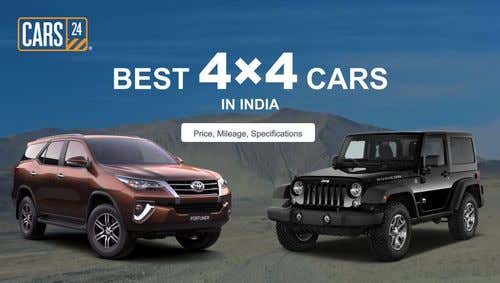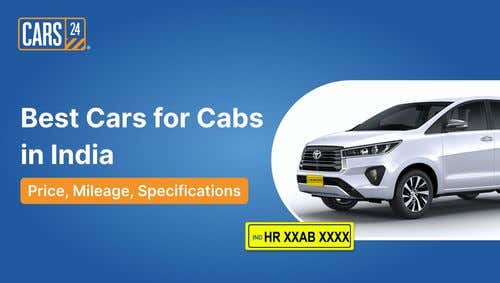Road Safety Rules in India – Road Safety Tips

Updated on: 21st December, 2023 IST
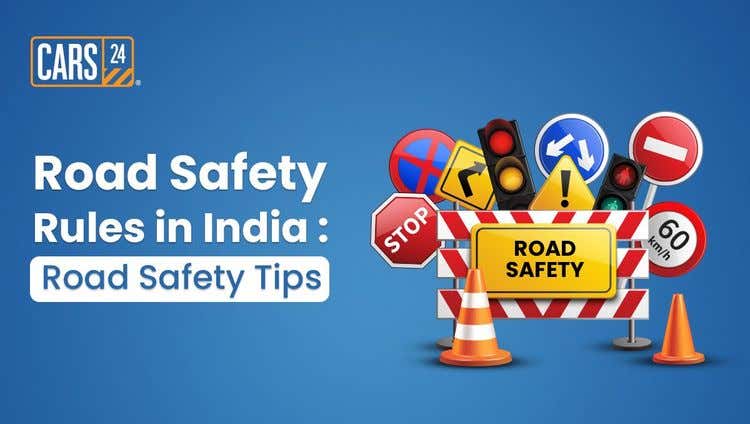
India is a country of colours, commotion and contrasts, and nowhere do we see all three more evidently than on its roads. On one hand, you have the lively, often aggressive traffic of the bigger cities like Mumbai and Delhi. On the other hand, you have the long and prosaic roads of the small towns and villages where you can enjoy a quiet, almost surreal drive through dramatic landscapes.
Despite all the experiences that India has to offer, one thing is certain: road safety continues to be a serious issue for all of us. According to the Ministry of Road Transport and Highways, there were 1,55,622 road traffic-related deaths in India in 2022.
In this blog, we will explore some of the road safety rules in India and offer a handful of tips on staying safe while driving on Indian roads. These tips will help you stay safe and avoid accidents. So, fasten your seatbelts and let's get started!
Table of Contents
- Some of the Most Important Traffic Rules to Follow in India
- Road Safety Rules for Pedestrians
- Road Safety Rules for Kids
- Road Safety Rules for Drivers (Cyclists, Riders, and Drivers)
- What Are the Different Traffic and Road Safety Issues?
- Traffic Signs in India
- Importance of Traffic Rules in India
- Road Safety Tips to Follow in India
- Road Safety Initiatives Taken by the Indian Government
- The Bottom Line
- FAQ's
Some of the Most Important Traffic Rules to Follow in India

Navigating the bustling streets of India requires adherence to crucial traffic regulations that not only promote order but also safeguard lives. Here, we present a comprehensive list of the most pivotal traffic laws that every driver must acquaint themselves with to ensure a smooth and safe journey.
- Do Not Drink and Drive
Intoxicated driving remains a grave concern in India, with approximately 19 individuals losing their lives daily due to alcohol-related road accidents. To combat this menace, the law stipulates a blood alcohol limit of 0.03%, equivalent to 30 mg of alcohol per 100 ml of blood.
Failure to meet the permissible blood alcohol limit can result in fines or even imprisonment, depending on the severity of the offence.
- Distracted Driving is a Detriment
The revised Motor Vehicle rules, effective from October 1, 2020, restrict the use of mobile phones while driving to solely navigational purposes.
- Always Maintain Valid Insurance Coverage
Insurance lapses can lead to penalties for driving without appropriate protection. Ensuring continuous insurance coverage not only complies with the law but also safeguards your financial and legal interests in case of unforeseen accidents.
- Respect Speed Limits
Speeding contributes significantly to road accidents in India, accounting for 66% of reported cases in 2018. Penalties for exceeding speed limits vary depending on State and how much over the speed limit the vehicle was travelling.
- Embrace the Seatbelt Culture
Prioritising safety, one must cultivate the habit of fastening the seat belt immediately upon entering a vehicle. Violations of seatbelt laws can result in fines.
- No Excuses for Helmet Negligence
Riding a two-wheeler demands the unwavering use of helmets for all occupants, not just the rider. Failure to comply with helmet regulations can lead to fines or suspension of licence for up to three months.
- Red Means Stop
Jumping the red light not only endangers lives but also invites severe consequences. To avoid penalties of up to ₹5,000, it is crucial to abide by traffic signals diligently, even when pressed for time.
- Honouring the "No Entry" Zone
Designated by clear signals, "No Entry" zones are established to regulate one-way traffic flow. Entering these restricted areas can lead to collisions with oncoming vehicles, posing a threat to road users.
Road Safety Rules for Pedestrians
As pedestrians, we play a crucial role in ensuring road safety. By following these seven important rules, we can protect ourselves and contribute to a safer traffic environment. Let's take a look at these guidelines for pedestrian safety.
- Cross the road only at designated pedestrian crossings, foot over bridges, or zebra crossings.
- Before stepping onto the road, always look both ways to check for approaching traffic.
- Avoid illegal pedestrian crossing or crossing the road from undesignated areas.
- Educate children about road safety rules and the importance of using pedestrian crossings.
- Do not walk or stand on the road while distracted by mobile phones or other electronic devices.
- Exercise caution when approaching intersections and always be aware of turning vehicles.
- Respect and follow any instructions given by traffic police officers or crossing guards.
Road Safety Rules for Kids
Ensuring the safety of children on the road is of paramount importance. Teaching them road safety rules from an early age can help instil good habits and protect them from potential hazards. Here are six important rules that every child should follow:
- Use pedestrian crossings and wait for the traffic signal to indicate that it is safe to cross.
- Look in all directions before crossing the road, even if the traffic signal shows a green light.
- Walk on the footpath or sidewalk, away from the road, to avoid any direct contact with vehicles. If a footpath is unavailable, walk facing the oncoming traffic.
- Never run or dart into the road without thoroughly checking for oncoming traffic.
- Learn and understand the meaning of traffic signs, such as stop signs and pedestrian crossing signs.
- As a rule, young children should be accompanied by an adult when walking on the road.
Road Safety Rules for Drivers (Cyclists, Riders, and Drivers)
As drivers, cyclists, and riders, it is our responsibility to prioritise road safety for ourselves and others. By following these essential rules, we can help prevent accidents and ensure a safer road environment for everyone.
- Wear a helmet when riding a motorcycle or bicycle.
- Respect and adhere to traffic laws, including traffic signals, speed limits, and lane markings.
- Use hand signals or indicators to communicate your intentions to other road users.
- Maintain a safe distance from other vehicles, particularly when riding a bicycle or motorcycle.
- Never ride or drive under the influence of alcohol or drugs.
- When cycling, adhere to designated cycle lanes or bike paths whenever available.
What Are the Different Traffic and Road Safety Issues?

- Traffic Congestion
India is home to some of the most heavily populated cities in the world, and as a result, traffic congestion is a major issue. With more and more vehicles on the road, it's becoming increasingly difficult for drivers to navigate through crowded streets and highways, leading to delays and increased risk of accidents.
- Reckless Driving
Despite the many laws and regulations in place, reckless driving continues to be a major problem on Indian roads. Drivers who speed, tailgate, drive intoxicated, and engage in other dangerous behaviours such as driving on the wrong side put themselves and others at risk.
- Poor Road Infrastructure
India's road infrastructure is in dire need of improvement. Many roads are in poor condition, with potholes, missing or poorly-maintained guardrails, lack of footpaths, lane demarcation, and inadequate lighting.
- Pedestrian Safety
Pedestrians are some of the most vulnerable road users and are often at risk of accidents. Many footpaths are in poor condition or nonexistent, forcing pedestrians to walk on busy roads, increasing the risk of accidents.
- Lack Of Road Safety Awareness
People in India need to be educated and made aware of the importance of road safety and the steps they can take to stay safe on the road.
Read More – Types of Roads and Lane System in India Explained.
Traffic Signs in India
Traffic signs in India can be classified into three categories: mandatory signs, cautionary signs, and informatory signs. Mandatory signs are those that convey an obligatory instruction or a prohibition. Cautionary signs, on the other hand, indicate potential hazards or dangers that road users may encounter. Informatory signs, as the name suggests, provide information about the location, distance, and directions to specific destinations.
Understanding the different types of traffic signs is critical to ensuring the safety of all road users. To make things easier for you, we have curated a comprehensive list of Traffic signs in India where we give you a detailed overview of all the major road safety signs.
Traffic and road safety are major issues not only in India but around the world. These issues can range from minor inconveniences to major accidents and fatalities. Let's take a closer look at some of the different traffic and road safety issues currently impacting India and some ways we can navigate through these issues.
Importance of Traffic Rules in India

Traffic rules play an important role in regulating traffic flow, ensuring the safety of all road users, and preventing the occurrence and frequency of accidents. Without the existence and implementation of traffic rules, the roads would always be chaotic, and the risk of accidents would be much higher.
Here are some of the ways in which traffic rules help make life easier:
- Traffic lights, roundabouts, and speed limits control traffic at intersections
- Traffic rules prevent reckless driving and dangerous behaviours
- Stop signs and traffic lights prevent collisions and accidents
- Traffic rules protect vulnerable road users like pedestrians and cyclists
- Yielding to pedestrians at crosswalks enhances their safety
- Following traffic rules promotes a culture of road safety
- Drivers become more responsible and drive safely when they adhere to traffic rules
Read More – Highway Driving Tips – How Not to Spoil Your Roadtrip.
Road Safety Tips to Follow in India
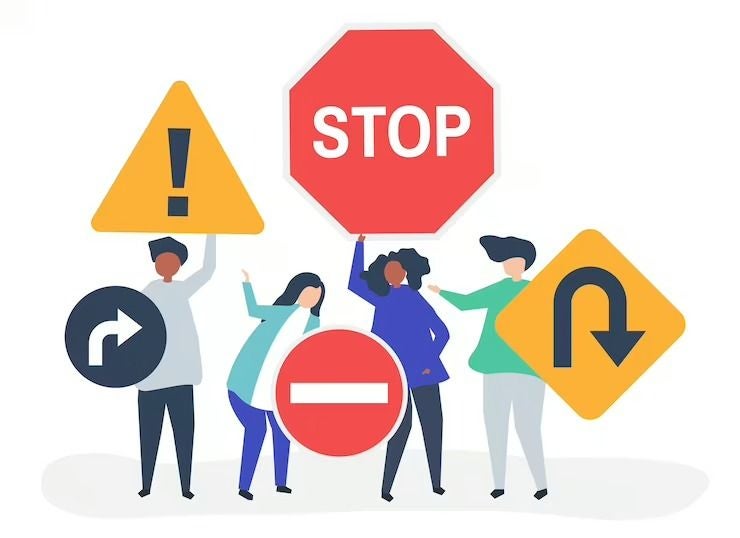
Road safety is a serious issue in India, and all drivers must take necessary steps to keep themselves and other road users safe. Here are some of the most important road safety rules that should be followed in India:
- Drive adjacent to the left side of the road and allow vehicles in the opposite direction to pass on the right side
- Always remember to pass or overtake the vehicle in front of you from its right side
- Exercise extra caution while approaching junctions, intersections, or crossings
- It is your responsibility as a road user to give way to fire service vehicles and ambulances
- Always stop your vehicle behind the designated stop lines on the road
- Avoid unnecessary use of the horn, especially in prohibited areas like hospital zones and school zones
- Adhere to traffic signs, instructions from traffic officials, and authorised persons
- Maintain a safe distance from the vehicle ahead to allow for sudden stops and avoid potential hazards
- Avoid carrying passengers on a tractor, and adhere to the registered passenger limits for goods carriages
- Do not overload your vehicle with materials and ensure that the load does not extend towards the front, back, or sides, causing inconvenience to other road users
- Public transport services should avoid carrying explosive, inflammable, or harmful substances that pose risks to both the transport and other road users
- Drivers should carry essential documents, including a driving licence, vehicle registration certificate, taxation certificate, insurance certificate, fitness certificate, and permit
Road Safety Initiatives Taken by the Indian Government
Road safety is one of the top priorities for the Indian Government, and the Ministry of Road Transportation and Highways (MoRTH) has taken several steps to promote high traffic awareness and proper implementation of road safety measures.
One of the ways they have been doing this is through publicity programs, grants-in-aid to voluntary organisations for implementing road safety programs, the National Highway Accident Relief Service Scheme and the setting up of Driver Training schools.
To address this issue on a local level, NGOs have been established in many cities. Police Departments also hold road safety weeks to raise awareness. The Road Safety Cell of the ministry has also been working closely to strengthen institutions and organisations by coming up with an awards scheme for outstanding contributions to road safety.
Read More – New Traffic Rules and Fines in India.
The Bottom Line
As we've learned, traffic rules are not just a set of boring regulations but a way to ensure a smooth and safe journey on the road. From obeying traffic signals and signs to following speed limits and avoiding distractions while driving, we can take simple steps to reduce the risk of accidents and make our roads safer for everyone.
In conclusion, road safety is one of the most serious issues that plague India, and it's equally important for us to take the necessary steps to stay safe on the road. Remember, roads become safer when we all understand and share the responsibility to keep them safe.
FAQ's
Traffic rules are a set of guidelines and regulations put in place to ensure the safety of drivers, passengers, and pedestrians on the road. They are designed to reduce the number of accidents, injuries, and deaths resulting from traffic incidents.
Speed limits are set to ensure that drivers are travelling at a safe speed which has been determined for the conditions of the road. Exceeding the speed limit can lead to accidents and increase the severity of injuries in the event of a collision.
Wearing a seat belt can greatly reduce the risk of injury or death in the event of an accident. It is also important to ensure that all passengers, including children, learn to wear seat belts.
Traffic signals, such as stop signs and traffic lights, are put in place to control traffic flow and prevent collisions. It is important to obey these signals for the safety of all the individuals on the road.
Right-of-way laws determine who has the right to proceed first at intersections and other areas where multiple vehicles may be present. Failure to obey these laws can lead to accidents.
Reckless driving often includes rash behaviours such as drunk driving, distracted driving and ignoring the traffic signals, and can greatly increase the risk of accidents.
Recently Added Cars to Buy
Other Blogs
- Recent
- Featured
Popular Cities to Sell Car


